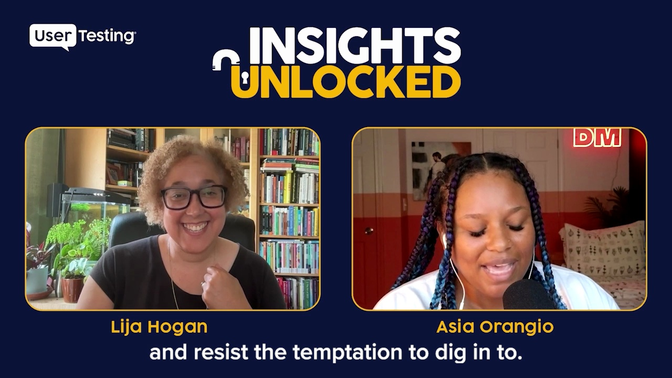
Beyond data: Why churn happens between the metrics

Your analytics dashboard shows a customer reduced login frequency by 60% over three months, then canceled. The numbers tell you what happened, but why did they disengage? Was it a frustrating workflow? Better competitor feature? Shifting priorities?
That's the gap in traditional churn analysis in SaaS. We track and measure cohorts, retention rates, and engagement scores with precision. But behavioral signals like login frequency and feature usage only capture what customers do, not why they do it. The answer lives in the space between your metrics, in the actual human experience of using your product.
What numbers can't capture
Quantitative data excels at identifying patterns. It can tell you that customers who don't complete onboarding within 14 days are 3 times more likely to churn. It can show you which features correlate with retention. But correlation isn't causation, and patterns aren't explanations.
Here's what typically falls through the cracks:
Emotional friction: A customer might use your product regularly (good engagement metrics) while feeling increasingly frustrated with the experience. The data looks healthy until the day they churn.
Competitive context: Your analytics can't tell you when a customer starts evaluating alternatives or what specific value propositions resonate with them elsewhere.
Unspoken needs: Customers often struggle with problems they never report. Your support ticket volume might be low not because everything's working perfectly, but because users have found workarounds, or simply given up.
The "good enough" problem: Sometimes churn isn't about failure. It's about a product that works adequately but doesn't deliver enough value to justify its place in an increasingly crowded tech stack.
How qualitative research reveals the why
While your analytics show you what customers do, talking to them—watching them use your product, hearing them describe their frustrations—reveals why they do it.
When you observe a user attempting to complete a task in your product, you see the actual friction points: the moment of confusion when two similar features seem to overlap, the workflow that requires too many steps, the terminology that doesn't match their mental model. You hear the sigh of frustration, the muttered "where is that button again?", the workaround they've invented because the intended path isn't intuitive.
These micro-moments don't show up in your dashboard, but they compound over time into the macro-decision to leave.
GUIDE
The better way to drive software renewals
What effective churn analysis looks like
Qualitative research doesn't replace your quantitative churn analysis, it complements it. Here's how to bridge the gap:
Start with your data: Use quantitative signals to identify cohorts worth investigating. Which customer segments have the highest churn rates? At what points in the customer journey do people drop off?
Ask the right questions: Instead of "Why did you churn?" (which often yields generic responses), explore specific experiences. "Walk me through the last time you tried to accomplish X" or "Tell me about a recent moment when the product didn't work the way you expected."
Test assumptions: Your data might suggest a feature isn't sticky. But qualitative research can reveal whether that's because customers don't understand it, can't find it, or don't need it. Each diagnosis demands a different solution.
Create continuous feedback loops: Don't wait until customers have already churned. Regular check-ins with users at different lifecycle stages help you spot problems before they become deal-breakers.
From pattern to root cause
When an enterprise fintech company noticed increased churn among small business customers, their data pointed to declining feature usage. Qualitative sessions revealed something unexpected: these customers weren't using features less because they'd lost interest. They were using them less because their business workflows had evolved, and the product hadn't kept pace. The solution wasn't re-engagement campaigns—it was product development informed by actual customer needs.
This is the difference between knowing your churn rate and understanding your churn reasons. One tells you there's a problem. The other tells you how to solve it.
In the video below, from our Insights Unlocked interview with Asia Orangio, she shares some tips for conducting an interview with someone who has churned:

In the end, the most effective churn prevention strategies combine the breadth of quantitative data with the depth of qualitative insight. Your analytics identify who's at risk and when. Customer behavior insights reveal why and more importantly, what you can do about it.
The path forward
Your churn analysis should answer two questions: "Who is leaving?" and "Why are they leaving?" If you can only answer the first, you're navigating with one eye closed. The insights that actually reduce churn—what to build, fix, and emphasize—come from understanding the customer behavior insights between the data points.
That's where mystery becomes clarity. Where reactive becomes strategic. Churn becomes an opportunity to build something customers genuinely can't imagine leaving.
At the end of the day, customers don't churn because of a number on your dashboard. They leave because of an experience. Understanding that experience is how you change the outcome.
Ready to transform your churn analysis? Get the step-by-step guide.
Key takeaways
- Metrics show what, not why: Your analytics reveal churn patterns but can't explain the motivations behind customer decisions. Understanding why requires going beyond the numbers.
- Four critical blindspots: Emotional friction, competitive context, unspoken needs, and the "good enough" trap all hide in plain sight while your engagement metrics look healthy.
- Qualitative research complements analytics: Use data to identify high-risk segments, then deploy qualitative methods to uncover root causes. Different problems require different solutions.
- Micro-moments compound into churn: Small frustrations—confusing workflows, mismatched terminology, unintuitive features—accumulate over time into the decision to leave.
FAQ
Q: How is qualitative churn analysis different from exit surveys?
A: Exit surveys capture what customers tell you after they've decided to leave, and are often generic responses. Qualitative research observes real behavior and captures friction in the moment, before churn happens.
Q: When should we use qualitative research vs. just analyzing our data?
A: Use data first to identify patterns and high-risk segments. Deploy qualitative research when you need to understand why those patterns exist. If your data shows declining engagement but can't tell you whether it's a usability issue, feature gap, or competitor threat, that's your signal.
Q: How many user sessions do we need to get actionable insights?
A: Start with 5-8 users per segment to identify systemic issues. You'll see patterns emerge quickly when problems are widespread. Scale up for validation, but most teams find clear themes within the first dozen sessions.
Q: Can qualitative research predict churn before it happens?
A: Yes. Regular check-ins at different lifecycle stages reveal friction before customers disengage. When you spot users developing workarounds, expressing frustration, or struggling with core workflows, you're seeing early warning signs that won't show up in your dashboard until it's too late.
ON-DEMAND WEBINAR





